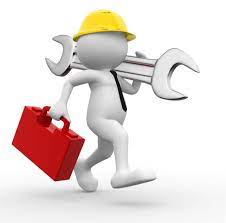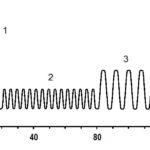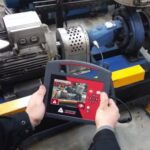The operational reliability and service life of machines, vehicles, various appliances, bridges, and many other long-life objects are strongly influenced by maintenance. This term generally denotes small works for restoring full operability, such as cleaning, exchange of oils and filters, and tightening of the locked screws and other adjustments, as well as the repairs of paints or minor faults or the exchange of small damaged parts. Maintenance is related to the kinds of objects and failures, and its techniques and strategies have been developed along with the development of technology. Historically first was the maintenance after failure or breakdown maintenance. It was the only strategy common when the machines were relatively simple, their number and productivity was low, and the knowledge about their operation and failures was limited. The losses caused by the corresponding downtimes had to be accepted, as no other solution was known. The strategy of repairs and maintenance after failure is used also today, namely in two cases. The first one are the sudden failures that cannot be predicted, and the second case are the failures of cheap objects, where a failure has none or only insignificant consequences. During the first half of the 20th century, substantial changes have occurred. The machines, vehicles and other objects became more complex, with failures from various reasons. The number of failures grew, the more so that some products, such as cars, were produced in large series in production lines. The consequence of a failure of a machine in such line was the stopping of the whole line, and the losses caused by this break became much bigger.
Also a failure of a complex and expensive object (e.g. a locomotive, a big ship, or an aircraft) meant big losses. Many of these failures were due to wear or fatigue and occurred after a certain time of operation. Thanks to the understanding of these processes, it became possible to predict approximately the time to failure or to a significant degree of wear in some kinds of items (bearings, cylinders and piston rings, sealing, and valves), or the time to the critical loss of efficiency of oil or air filters, etc. All this has led to the change of the maintenance philosophy. Gradually, the so-called preventive maintenance was introduced. Its principle is simple: the endangered parts are repaired or replaced by new ones in fixed regular intervals based mostly on experience. The organization of preventive maintenance is simple and cheap. This approach is suitable for gradual failures (deterioration due to wear, fatigue, corrosion, etc.) and is effective especially if the scatter of the deterioration rate or the time to failure of individual items of a certain kind is low. In complex systems consisting of many components, failures occur from various reasons, in irregular intervals, and the failures of the system usually occur due to other reasons than the fatigue of key components. During this useful period of the life, the failure rate of the system is approximately constant and the time between failures has exponential distribution (cf. Chapter 4). The maintenance according to a fixed plan then loses any substantiation. Another drawback of preventive maintenance is that the replacement of components in fix intervals can be too early for some of them, which is uneconomical, and too late for some others, which can mean worse efficiency of operation or a higher risk of failure. As the methods for ascertaining the technical condition become gradually better, an approach based on the use of technical diagnostics became more common (see also Chapter 8). This kind of maintenance, based on the actual condition of the object, is called on-condition maintenance. The monitoring of the technical condition and its time development are used for the determination of the optimum time for replacement. Modern cars, rail vehicles, aircrafts, and some other items, as well as the pertinent service stations are equipped with devices enabling the appropriate diagnostics. The diagnosed objects are used best, but additional costs for the diagnostics are necessary.
In machinery, chemical, and some other industries, maintenance has become a very important branch. However, the related costs are high. Ways are therefore sought to reduce them. Currently, the so-called reliability-centred maintenance (RCM) is being introduced [1]; see also IEC 60300-3-11. The idea is to eliminate all maintenance works that are not necessary. Often, the failure of a non-crucial component does not endanger the operation of the whole object. With the RCM approach, the system is sometimes allowed in operation also after the failure of unimportant components, and their repairs and maintenance are done only when the more important parts approach their limit state. If the RCM strategy should be introduced, a thorough analysis is done first to reveal the consequences of all possible failures, and the maintenance plan is adjusted appropriately. Maintenance is a wide topic that goes much beyond this concise book. The reader is referred to the literature, such as [1 – 3].


